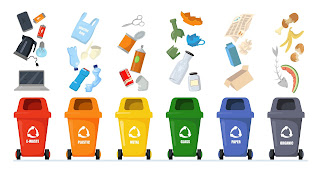What are The Disadvantages of Disposing Solid Waste in Landfills Sites?
The three most important problems with landfills are toxins, leachate, and greenhouse gases.
Toxins
Many materials that end up as waste contain poisonous substances. Over the long haul, these poisons drain into our dirt and groundwater and become ecological risks for quite a long time. Electronic waste is a genuine model. Waste like TV's PCs, and other electronic apparatuses contain a considerable rundown of unsafe substances, including mercury, arsenic, cadmium, PVC, solvents, acids, and lead.
Leachate
Leachate is the fluid framed when waste separates in the landfill and water channels through that waste. This fluid is profoundly harmful and can dirty the land, groundwater, and streams.
Greenhouse Gas
The process is not always cost-effective:
Indeed, however, it might pay money to the supporters, in all actually, this interaction needs a great deal of cash, time, and land to set up a plant and run. As the measure of waste that is being added to the byproduct unit increments, so are the number of plants that interact with these assets.
Setting up a huge factory facility needs a ton of cash, and this administration will begin bringing yields just over the long haul. This isn't viewed as transient worthwhile speculation.
While unloading an ever-increasing number of odds and ends in the landfills cause just $50 per ton, appropriately reusing them will cause $150 per ton, which is triple the expense, and subsequently, a considerable lot of the organizations will switch over to the landfill technique itself.
Everybody knows reusing means smaller trash going to our landfills, yet the best environmental advantage of reusing is the conservation of power and individual assets and the prospect of pollution that is created when raw material is used to make another item. SwagCycle, the organization expects to repurpose old promotional items strongly.



Comments
Post a Comment